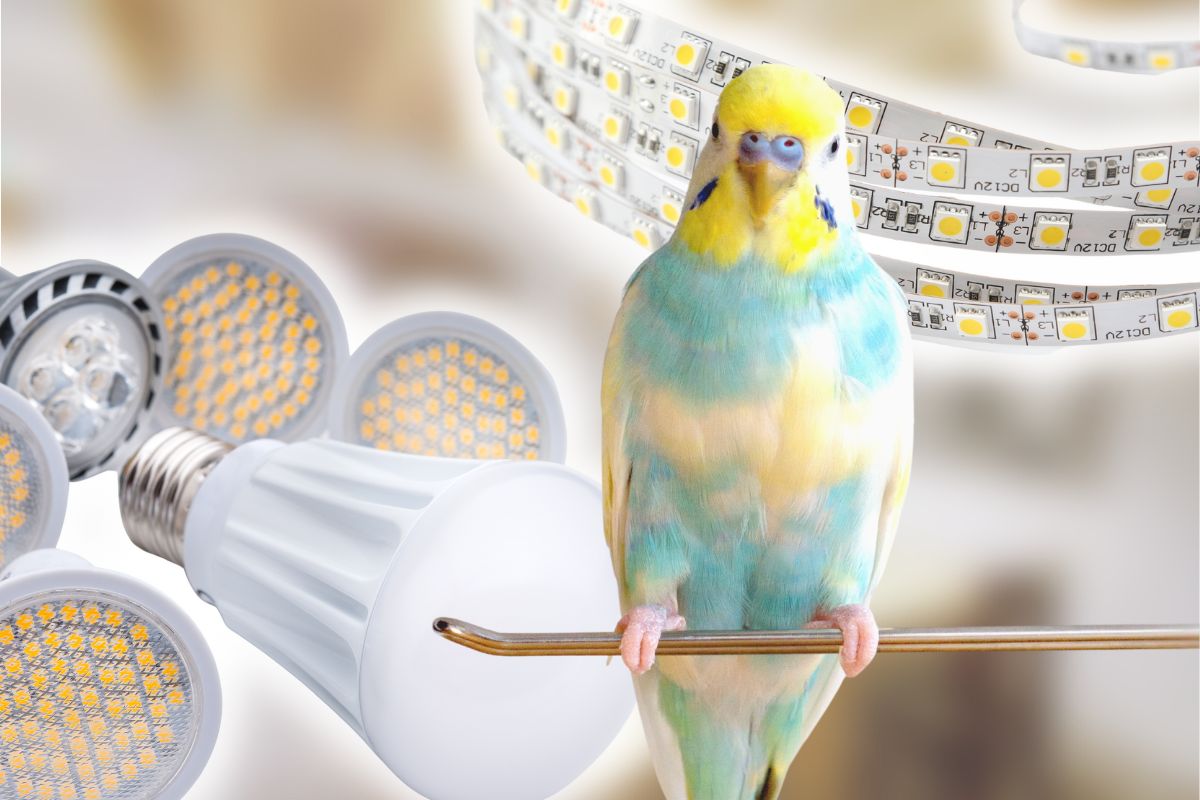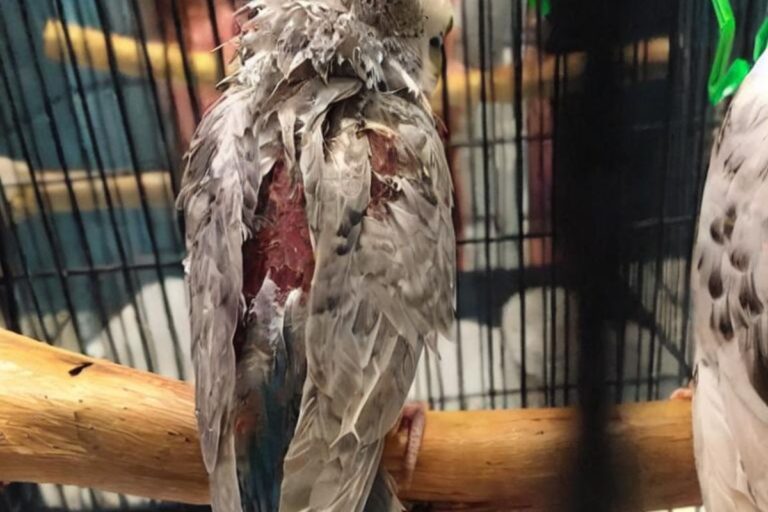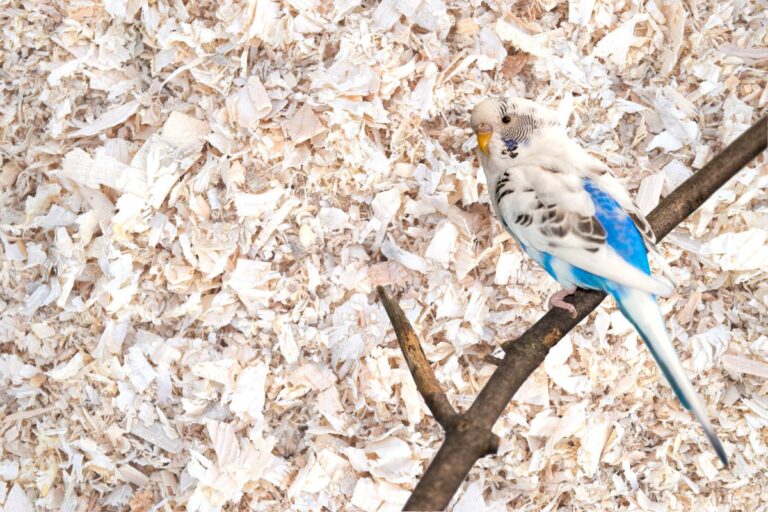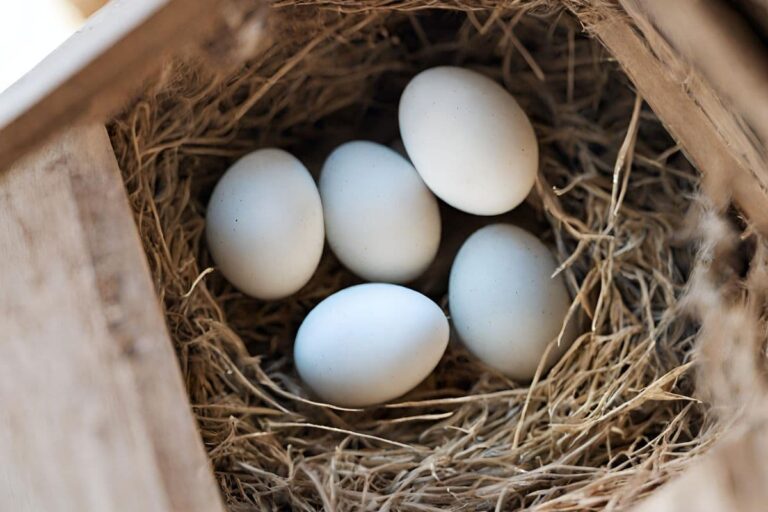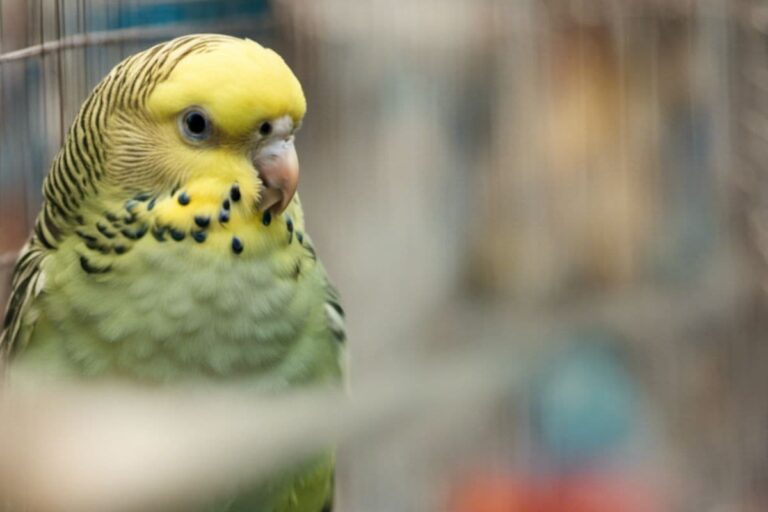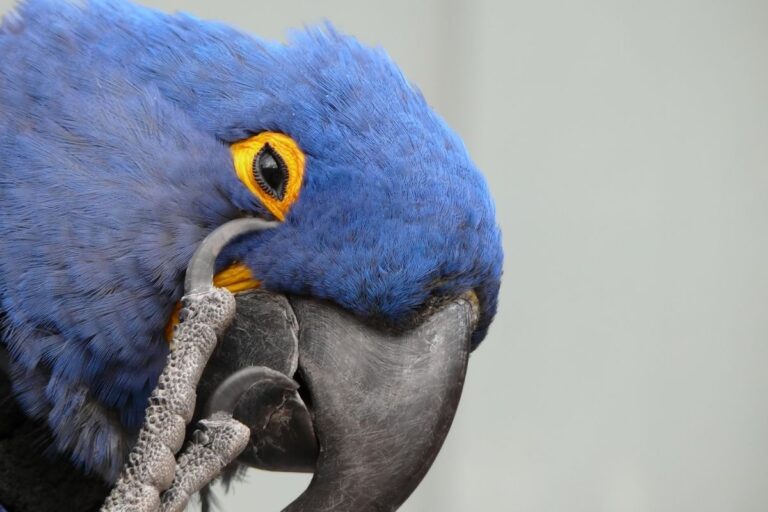Are LED Lights Bad for Parakeets
Disclosure: The opinions expressed in this post are my own. This post may also contain affiliate links, which means that I will receive a commission if you decide to purchase through my links, at no additional cost to you. As an Amazon Associate, I earn from qualifying purchases.
As a parakeet owner, you want to provide the best possible environment for your feathered friend. You’ve likely heard that LED lights are energy-efficient and long-lasting, but have you ever considered whether they are safe for your parakeet?
There’s a lot of conflicting information out there about whether LED lights are harmful to birds. Some sources claim that LED lights emit blue light that can disrupt a bird’s circadian rhythm, while others argue that LED lights are perfectly safe. In this article, we’ll delve into the research and explore whether LED lights are bad for parakeets.
Are LED Lights Harmful to Parakeets?
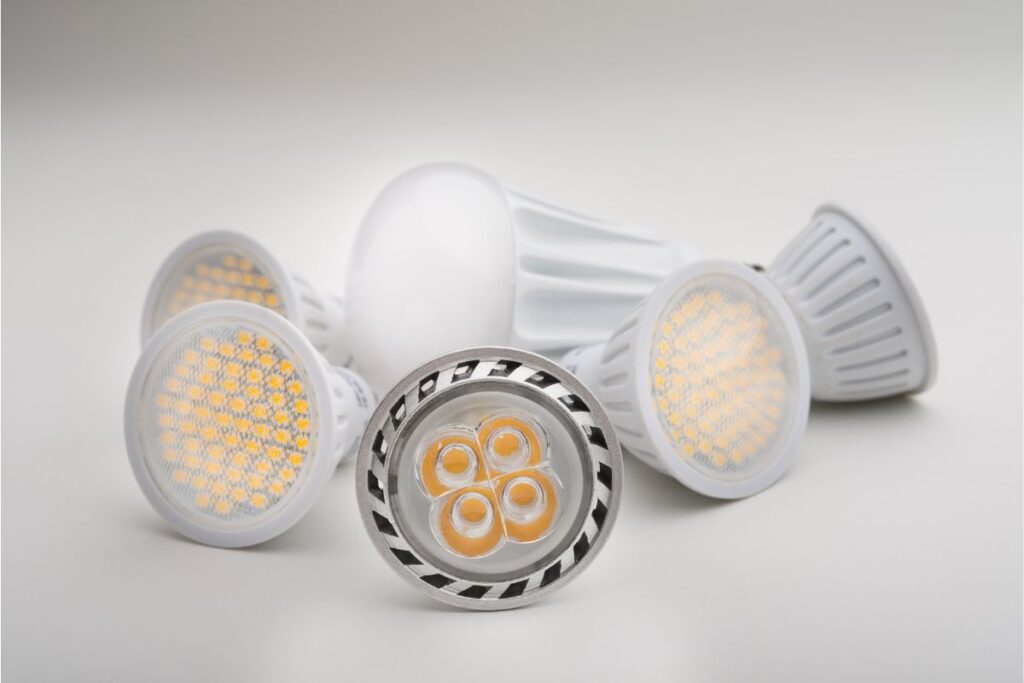
The effect of LED lights on parakeets is primarily related to their inability to fully support the bird’s wellbeing when used as the sole source of light, rather than the harm they may cause.
There is currently no conclusive evidence to suggest that LED lights have a harmful effect on the eyes of parakeets or budgies.
However, it is important to note that parakeets have sensitive eyes and can be easily affected by bright lights, which is something LED lights are known for.
If you do choose to use LED lights in your home, it is best to use lower wattage bulbs and avoid placing them directly over your budgie’s cage. Additionally, using a full spectrum LED light is the better way to go.
A word of warning though. If you are placing these LED lights in your parakeet’s cage, you need to choose one that has a chew guard on it. We recommended a great one further down in this article.
Ultimately, it is important to monitor your budgie’s behavior and health to ensure they are not being negatively affected by any lighting in your home.
Choosing the Right LED Lights & Their Placement for Birds
When it comes to choosing LED lights for your parakeets, it’s important to understand some important factors to take note, especially when choosing the color, brightness and where to place them.
The Importance of Color Temperature
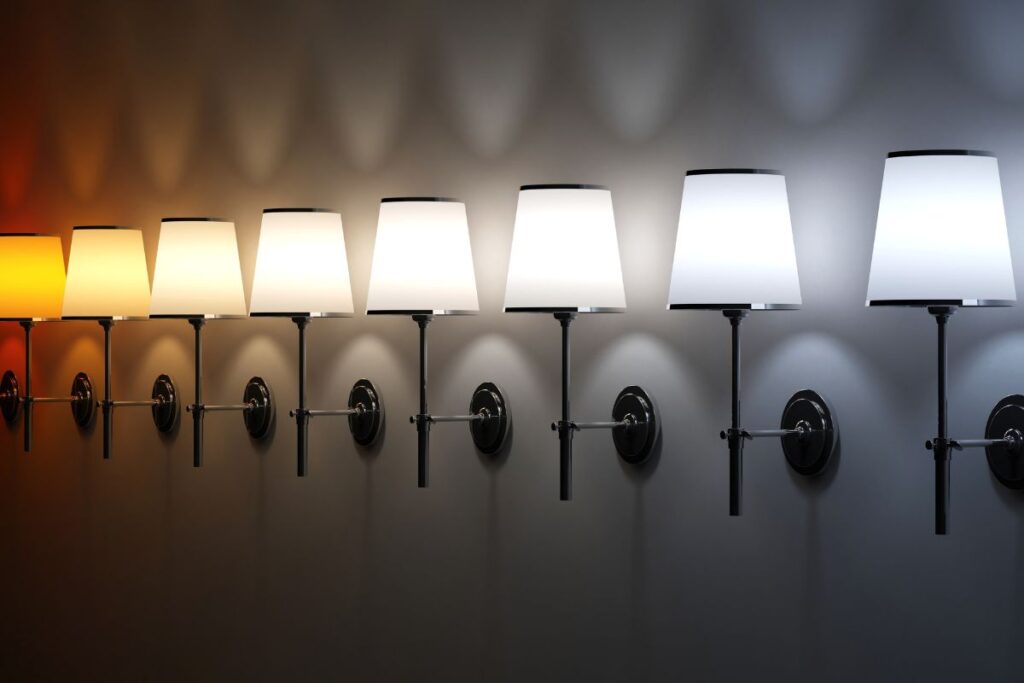
One important factor to consider when using LED lights around parakeets is the color temperature. LED lights come in a range of color temperatures, from warm to cool.
Parakeets are sensitive to changes in light and can be negatively affected if the color temperature is too cool or too warm. It’s important to choose LED bulbs within the recommended color temperature range to ensure the health and well-being of your parakeets.
Recommended Color Temperature Range for Bird Lighting
The recommended range for parakeets is between 5000K and 6500K, which mimics natural sunlight and helps regulate their circadian rhythm.
Avoid using bulbs with a color temperature below 5000K, as this can disrupt their sleep patterns and lead to health issues. It’s also important to provide your parakeets with a consistent lighting schedule, with 10-12 hours of light and 12-14 hours of darkness each day.
The Risks of High Blue Light Spectrum
The blue light spectrum emitted by LED lights can be harmful to parakeets, as it can disrupt their sleep patterns and lead to health issues. This is because parakeets are sensitive to the blue light spectrum, which mimics the natural light of dawn and dusk.
Exposure to high levels of blue light spectrum can also cause parakeets to become disoriented and confused, leading to accidents and injuries. This is especially true if the LED lights are placed near their cages, as they can be easily startled by sudden changes in light.
To minimize the risks of LED lights for parakeets, it is recommended to use bulbs with a lower blue light spectrum or to use lighting fixtures with dimmer switches. Additionally, it is important to provide parakeets with a dark, quiet environment for at least 12 hours a day to ensure they get enough rest.
Where Should You Place LED Lights Around Your Parakeet?
Avoid placing LED lights directly above your parakeet’s cage, as this can cause glare and discomfort. Instead, aim for indirect lighting from the sides or behind the cage.
Make sure the distance between the cage and light is a minimum of 2 feet at the very least. Or even better, place the LED lights in areas that are not directly in your parakeet’s line of sight.
Recommended Light Exposure Duration for Your Parakeets
When it comes to providing light for your parakeets, it’s important to consider the duration of exposure.
Experts recommend providing 10-12 hours of light per day, as this mimics the natural daylight cycle and helps regulate their circadian rhythm. The rest of the time, your parakeet should spend its time in darkness for optimal health and wellbeing.
It’s also important to consider the type of light being used. Full-spectrum lighting, which mimics natural sunlight, is recommended for parakeets as it helps regulate their circadian rhythms. This is something that typical LED lights are not able to provide. Therefore it’s important to also make sure your LED lights are also supplemented with natural daylight if possible, or that you are using full spectrum LED lights. Read on the next paragraph to understand more about full spectrum lighting.
The Importance of Full Spectrum Lighting for Birds
Full spectrum lighting is crucial for the health and well-being of birds, including parakeets. Many LED lights alone may not provide the full spectrum of light that birds need to thrive, leading to negative effects on their physical and emotional health.
Without proper full spectrum lighting, birds may experience issues such as decreased activity levels, poor feather health, and even depression. It is important for bird owners to invest in high-quality full spectrum lighting to ensure their feathered friends are receiving the necessary light for optimal health.
In addition to physical health benefits, full spectrum lighting can also improve a bird’s mood and behavior. Birds exposed to proper lighting are more likely to engage in natural behaviors, such as singing and playing, and may be less prone to aggressive or destructive behavior.
When selecting lighting for a bird’s habitat, it is important to choose bulbs specifically designed for birds that provide full spectrum lighting. Avoid using LED lights that do not provide the necessary wavelengths of light for bird health, as the sole source of light.
Can You Put Lights in a Parakeet’s Cage?
Since parakeets are aggressive chewers, putting any form of objects that could harm them such as electrical lighting, cables and appliances should be avoided, unless certain safety measures have been implemented.
There are plenty of LED light products that are designed to be installed inside a birdcage, but these lights are suited for soft billed birds such as finches and canaries, and not parakeets. Since the cables are exposed, parakeets may be enticed to chew on them due to their rubbery texture.
If you want to install LED lights in your Parakeet’s cage, you can. But you need to find one that has a chew guard wrapping around the cables.
You still need to be careful about the type of light you use and the placement of the light in the cage. The lights should not be too bright and glaring, or emit heat, since they are in very close proximity to the birds.
Best Parakeet-Safe LED Cage Light
The M&M Cage Company Bird Cage Light with Chew Guard is a great way to keep your bird happy and healthy with its full spectrum LED light that simulates natural lighting conditions. Unlike other bird lights, this light is designed to be safely used around hard-billed birds such as parakeets and parrots, making it a great choice for any bird owner. Plus, it’s easy to install with provided mounting hardware and stainless steel wire ties, so you can start enjoying the benefits of natural-looking, full-spectrum light in just minutes.
Prices pulled from the Amazon Product Advertising API on:
Product prices and availability are accurate as of the date/time indicated and are subject to change. Any price and availability information displayed on [relevant Amazon Site(s), as applicable] at the time of purchase will apply to the purchase of this product.
With no pricey bulbs to replace and water-resistant housing for worry-free cleaning, you and your bird will enjoy this light for years to come.
So if you want to keep your bird happy and healthy with a bird-safe lighting solution that simulates natural lighting conditions, the M&M Cage Company Bird Cage Light with Chew Guard is definitely worth considering.
Are Birds Attracted to LED Lights?
Birds are known to be attracted to artificial lighting at night, a response called phototaxis.
LED lights are no exception. Some birds, particularly nocturnal species, are drawn to LED lights and can be seen hovering around them at night. This behavior may be due to the fact that LED lights provide brighter illumination than other types of street lighting, and that it may give the birds a sense of security when they fly close to them.
Can I Use Colored LED Lights around Birds?
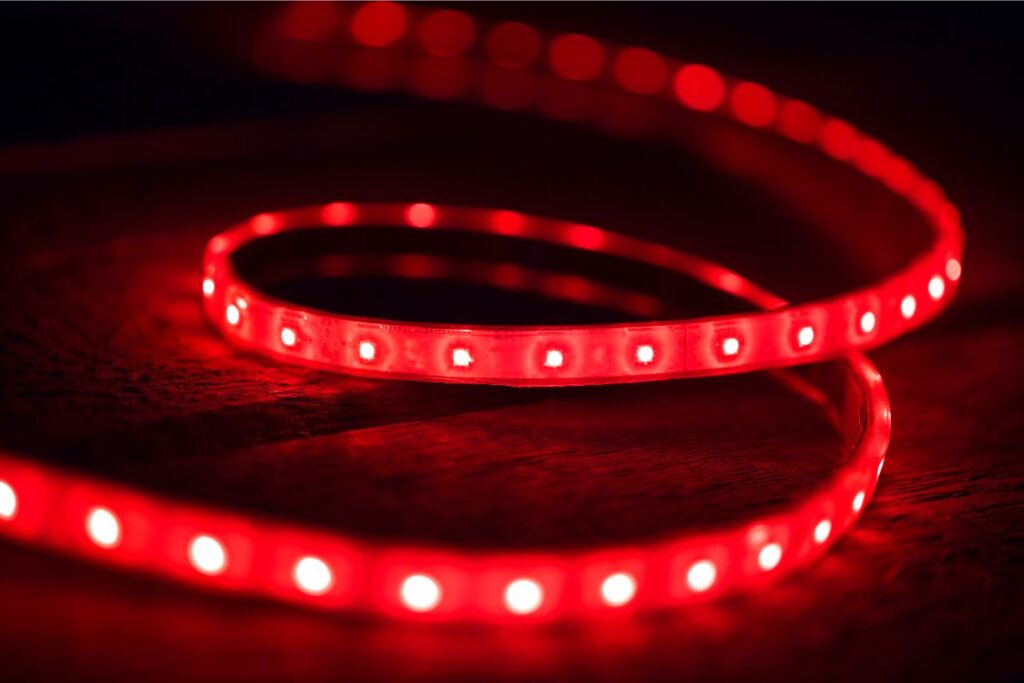
A research done by Purdue University showed that birds consistently avoided blue and red lights. Therefore, it’s not a good idea to use blue or red lights around their cages permanently as they may not feel comfortable around them.
It’s best to use natural lighting or full spectrum LED lights that are designed for birds instead, as these provide the most beneficial wavelengths of light for your parakeets.
Final Words
W there is no direct evidence that LED lights are bad for parakeets, it is important to be cautious and considerate when using them around your feathered friends. Some parakeets may be sensitive to the blue light emitted by LED lights, so it may be best to use LED lights specifically designed for birds or limit their exposure to them.
Additionally, providing your parakeet with plenty of natural light and a consistent day/night cycle can help promote their overall health and well-being. As with any pet care concern, it is always best to consult with a veterinarian if you have any questions or concerns about your parakeet’s health.



